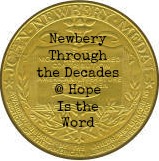We had a bit of an unusual read-aloud month. Between my hubby’s travel schedule, family travel over Memorial Day, and lots of special end-of-the-year happenings (and birthday happenings for Miss M…who is now 11!) we had fewer nights of our usual routine.
I wrote about the highlight of our reading month already: The Tune is in the Tree by Maud Hart Lovelace.
At the end of April, Miss M and I started Brighty of the Grand Canyon by Marguerite Henry. With few bedtime read-aloud nights for just Miss M and I, it took us pretty much all month to finish it even thought it wasn’t all that long. The Grand Canyon will be among our vacation stops at the end of the summer, so I thought this would be a nice book to add to our reading list. We both enjoyed it. As with other books by this author, Brighty (a spunky little burro) is the main character, with humans playing a supporting role — an old prospector, an outlaw, a hunter, a boy working at a camp. It was fun to see the history of the Grand Canyon “through the eyes” of an animal witnessing the changes as more people moved into the area of the canyon in the early 20th century.
We spent a lot of time with our friend Percy Jackson this month. 😉 I forgot to mention in April that we listened to the second book in the Percy Jackson and the Olympians series, The Sea of Monsters. We managed to listen to both books three and four in May! We listed to book three, The Titan’s Curse, as evening entertainment a number of nights while my hubby was traveling. We had about nine hours of time in the car over Memorial Day weekend, which was just about perfect for listening to book four, The Battle of the Labyrinth. This is definitely one of those series that gets you “hooked”. The kids just couldn’t wait to find out what would happen in the next book. They are incredibly eager for me to get the fifth and final audio book in the series from the library. I, however, am eager for a break from Greek mythology and intense battle scenes for a couple weeks…so shhh…don’t tell them that I might be dragging my feet in requesting the last one. 🙂
We wrapped up a science-related read aloud this month as well. After enjoyed a short chemistry study with The Elements by Ellen McHenry, I thought The Mystery of the Periodic Table by Benjamin Wiker would be a great follow-up to end our year of science. While the first couple of chapters were mostly review from our reading of Science in the Ancient World by Jay Wile, the rest was new material. I thought it was interesting and relatively engaging. A few times Mr K (age 6) even asked me to read more after I was ready to stop for the day. I was glad that we did this read aloud after a short study of the elements, otherwise I think a lot more of it would have gone over the kids’ heads. I did decide to skip the last chapter since it was a lot more technical. But the end of the second-to-last chapter was well set up to be an ending point, so the kids didn’t feel like they were left hanging. After hearing about lots of ways that early scientists got things wrong about the nature of the world and what things are really made of, they were happy to hear about how finally, after a couple thousand years, scientists finally did get it right. 😉








